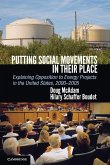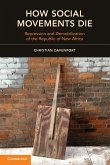This study sheds light on the historical development of the Third Republic French labour movement.
Like many organizations and social movements, the Third Republic French labour movement exhibited a marked tendency to schism into competing sectarian organizations. During the roughly 50-year period from the fall of the Paris Commune to the creation of the powerful French Communist Party, the French labour movement shifted from schism to broad-based solidarity and back to schism. Ansell analyses the dynamic interplay between political mobilization, organization-building, and ideological articulation that produced these shifts between schism and solidarity. The aim is not only to shed light on the evolution of the Third Republic French labour movement, but also to develop a more generic understanding of schism and solidarity in organizations and social movements. To develop this broader understanding, the book builds on insights drawn from sociological analyses of Protestant sects and anthropological studies of segmentary societies, as well as from organization and social movement theory.
Table of contents:
Acknowledgments; 1. The struggle and the conciliation; 2. Schism and solidarity; 3. Vox Populi, Vox Dei; 4. Esprit de corps; 5. Organizing the fourth estate; 6. The new covenant; 7. 'Above all we are syndicalists'; 8. From congregation to reformed church; 9. Dealignment; 10. The party the syndicalists built; 11. Conclusion; Works cited; Index.
Like many organizations and social movements, the Third Republic French labour movement exhibited a marked tendency to schism into competing sectarian organizations. During the roughly 50-year period from the fall of the Paris Commune to the creation of the powerful French Communist Party, the French labour movement shifted from schism to broad-based solidarity and back to schism. Ansell analyses the dynamic interplay between political mobilization, organization-building, and ideological articulation that produced these shifts between schism and solidarity. The aim is not only to shed light on the evolution of the Third Republic French labour movement, but also to develop a more generic understanding of schism and solidarity in organizations and social movements. To develop this broader understanding, the book builds on insights drawn from sociological analyses of Protestant sects and anthropological studies of segmentary societies, as well as from organization and social movement theory.
Table of contents:
Acknowledgments; 1. The struggle and the conciliation; 2. Schism and solidarity; 3. Vox Populi, Vox Dei; 4. Esprit de corps; 5. Organizing the fourth estate; 6. The new covenant; 7. 'Above all we are syndicalists'; 8. From congregation to reformed church; 9. Dealignment; 10. The party the syndicalists built; 11. Conclusion; Works cited; Index.








